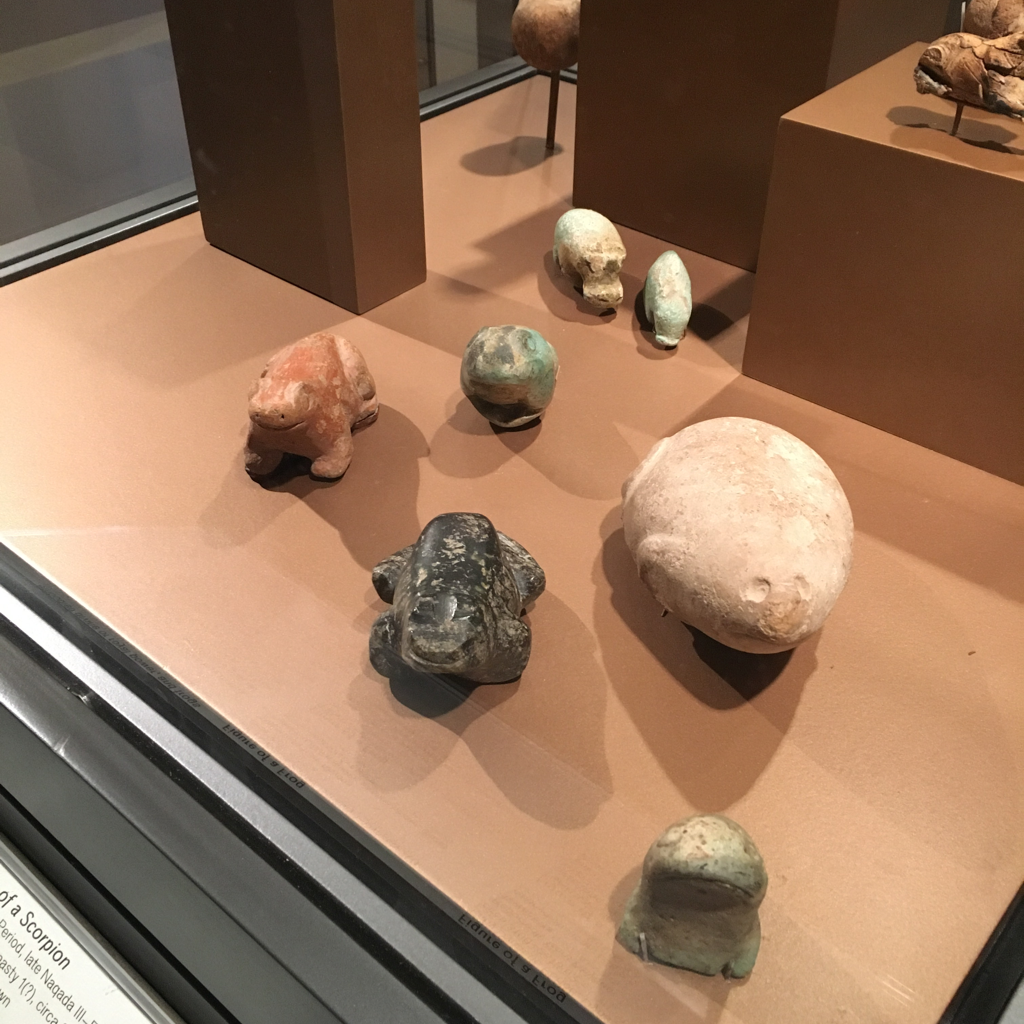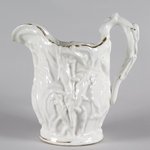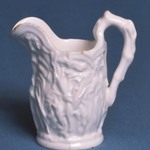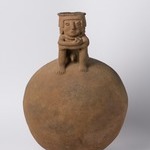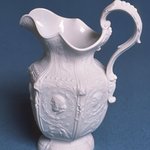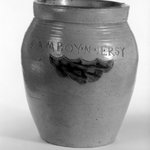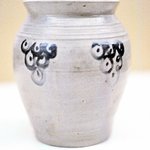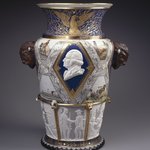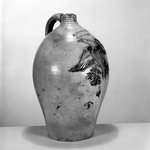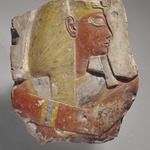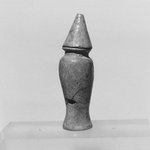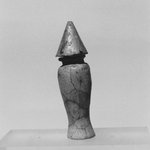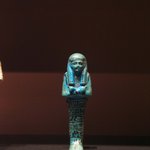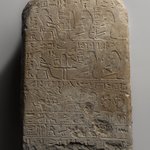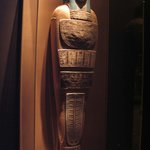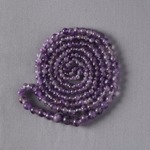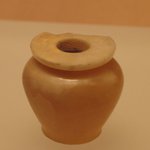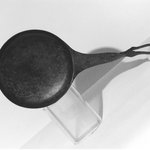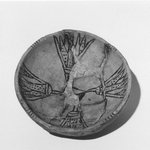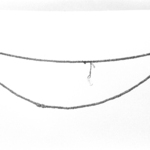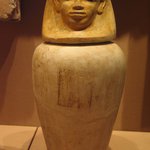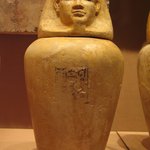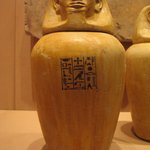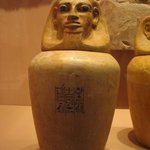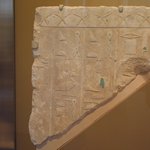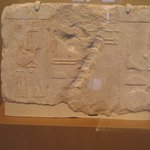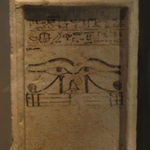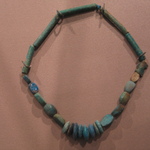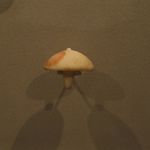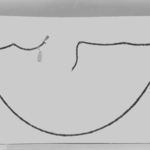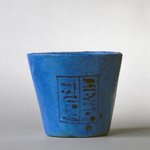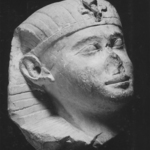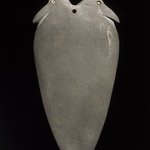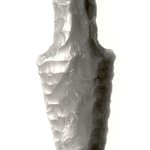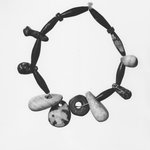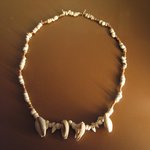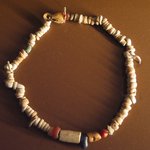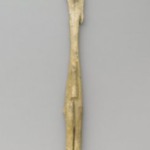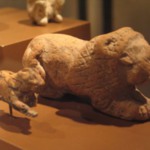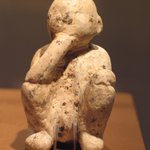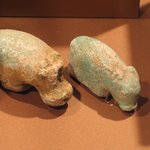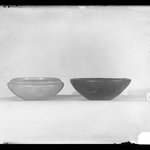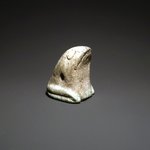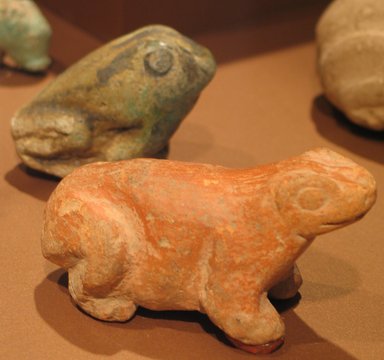
Figure of a Frog
Egyptian, Classical, Ancient Near Eastern Art
On View: Pre-Dynastic, Egyptian Galleries, 3rd Floor
Early Sculpture
Almost all of the small figures in this case originally were placed in temples.
We do not know the significance of many of these early objects. The lion probably embodied divine or royal power, and frogs may have provided protection during childbirth, as in later times.
The figure of a squatting little boy in this case may have been offered to a god as the expression of a wish to bear children. The destructive powers of animals such as pigs, hippos, and scorpions could apparently be neutralized and even made useful through their images, as in the hippo-headed top of a mace (war club).
The ivory lioness was part of a common board game, of which partial sets have survived. The opposing side’s pieces were carved ivory figures of crouching lions or dogs.
Almost all of the small figures in this case originally were placed in temples.
We do not know the significance of many of these early objects. The lion probably embodied divine or royal power, and frogs may have provided protection during childbirth, as in later times.
The figure of a squatting little boy in this case may have been offered to a god as the expression of a wish to bear children. The destructive powers of animals such as pigs, hippos, and scorpions could apparently be neutralized and even made useful through their images, as in the hippo-headed top of a mace (war club).
The ivory lioness was part of a common board game, of which partial sets have survived. The opposing side’s pieces were carved ivory figures of crouching lions or dogs.
MEDIUM
Faience
DATES
ca. 3000–2675 B.C.E.
DYNASTY
Dynasty 1 to Dynasty 2
PERIOD
Early Dynastic Period
DIMENSIONS
2 1/16 in. (5.2 cm)
Base: 2 3/16 x 1 1/2 in. (5.5 x 3.8 cm) (show scale)



COLLECTIONS
Egyptian, Classical, Ancient Near Eastern Art
ACCESSION NUMBER
L58.2.3
CREDIT LINE
Anonymous loan
CATALOGUE DESCRIPTION
Blue-green faience statuette of crouching frog. Eyes indicated by circles outlined in manganese. Legs indicated in high relief.
Condition: Glaze worn. Front of sculpture in part restored.
EXHIBITIONS
MUSEUM LOCATION
This item is on view in Pre-Dynastic, Egyptian Galleries, 3rd Floor
CAPTION
Figure of a Frog, ca. 3000–2675 B.C.E. Faience, 2 1/16 in. (5.2 cm). Anonymous loan, L58.2.3. Creative Commons-BY (Photo: , CUR.L58.2.3_L58.2.5_erg3.jpg)
IMAGE
group, CUR.L58.2.3_L58.2.5_erg3.jpg.
"CUR" at the beginning of an image file name means that the image was created by a curatorial staff member. These study images may be digital point-and-shoot photographs, when we don\'t yet have high-quality studio photography, or they may be scans of older negatives, slides, or photographic prints, providing historical documentation of the object.
RIGHTS STATEMENT
Creative Commons-BY
You may download and use Brooklyn Museum images of this three-dimensional work in accordance with a Creative Commons license. Fair use, as understood under the United States Copyright Act, may also apply.
Please include caption information from this page and credit the Brooklyn Museum. If you need a high resolution file, please fill out our online application form (charges apply).
For further information about copyright, we recommend resources at the United States Library of Congress, Cornell University, Copyright and Cultural Institutions: Guidelines for U.S. Libraries, Archives, and Museums, and Copyright Watch.
For more information about the Museum's rights project, including how rights types are assigned, please see our blog posts on copyright.
If you have any information regarding this work and rights to it, please contact copyright@brooklynmuseum.org.
RECORD COMPLETENESS
Not every record you will find here is complete. More information is available for some works than for others, and some entries have been updated more recently. Records are frequently reviewed and revised, and we welcome any additional information you might have.



